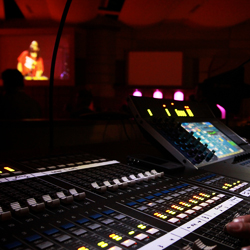I have traveled on the road for years both in front of the microphone and in a technical capacity, and I have sometimes witnessed a great divide between techs and performers. Oddly, many times the church staff is the guiltiest.
Once I was traveling with a group as the tech director, and during the show I would come on stage and sing a song with the band. It was often comical how the pastor/church staff would treat me as a technician before the concert, compared to how they treated me as performer.
Not all were guilty of this, but it happened more often than not. It’s almost as if techs are treated as the second-class citizens of the worship team.
How can worship leaders change this?
Always include technicians in early planning meetings. Many times church leaders will plan a special service without knowing if they have the equipment capability or the talent to pull it off.
Emphasize the tech team’s importance in front of onstage performers. You can show respect and appreciation to them during rehearsal and after services.
Include tech members in the “green room” meeting before the service. Having knowledge of changes, transitions and scene changes always make the service run smoother.
Treat the “off-stage” equipment such as mic mixers, lighting consoles, etc., as instruments. If they are not operated with skill they will cause as much distraction as an out of tune or poorly played guitar.
How can tech staff bridge the communication gap?
Be proficient at operating your equipment. Know its capabilities and limitations. If the staff wants to try something out of the ordinary, be able to offer solutions or “a work-around” to make it happen.
Communicate with onstage performers before problems arise. As a monitor engineer I made friends with the musicians because I would leave my console and listen to the floor wedges to hear what they were hearing.
If they were using in-ear monitors, I would plug in to their body pack and do a quick listen. Check with stage performers after the service to make sure everything went as rehearsed.
Don’t make excuses. Admit mistakes when you make them. It keeps adversarial situations from happening and lets staff know that you care about a level of excellence.
I have a friend who is a media pastor at a church that has a large volunteer program. He has a slogan that he prints out and tapes on all sound mixers, computer monitors and lighting boards as a constant reminder to his team: “We will go unnoticed and count it as a privilege and honor to serve in this role in worship.”
To me that just about sums it up.
Michael Hill works with Sennheiser USA.





















